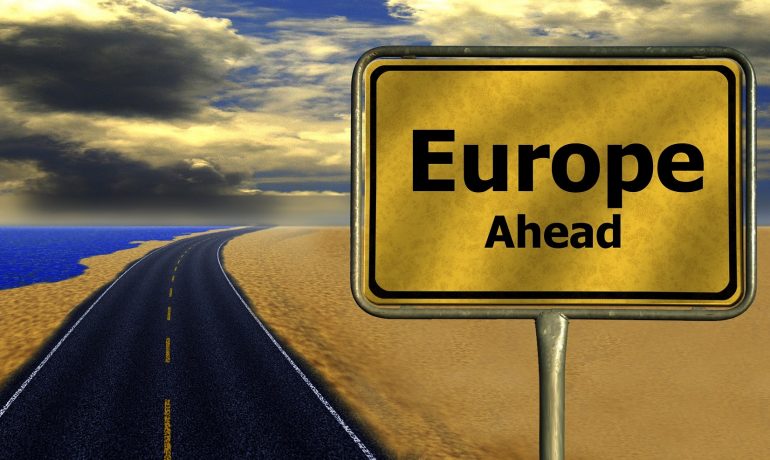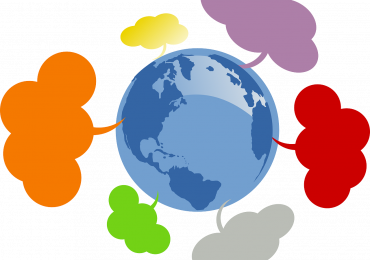This blog looks at the issues Europe faces in a changing world. Primarily the focus is on the European Union, whose 27 member states encompass the main body of Europe, but the blog will touch on the wider group of European states.
Context
The European Economic Community was originally established for two reasons: to assist the post-war reconstruction of Europe’s economies and societies, and to make unlikely the chances of another war between the states of Europe. The Treaty of Rome (1957) encapsulated these aims. The Treaty remains the foundation stone of the EU, but subsequent treaties have developed and widened the role of the Community. In particular, the Maastricht Treaty (1992) removed the word “economic” from the Treaty of Rome’s official title, and the Lisbon Treaty renamed it the “Treaty on the Functioning of the European Union”. Underlying these treaties has been an assumption of an “ever-closer union” between member states.
This continuity of basic purpose must exist in a volatile world. The EEC was founded in the days of the Cold War, when there was the ever-present threat of conflict between the West and the USSR and its allies. Following the fall of the Berlin Wall, and the dissolution of the USSR, the EU (as it became after the Maastricht Treaty) became part of a network of liberal, capitalist countries operating in a more open and global economy.
Recent events have seen an interruption to what was, for the EU, a relatively benign context. Following the Russian invasion of Ukraine, the EU has a war being fought on its borders. Globalisation has come under threat, following the credit crunch, and the advent of renewed rivalry between powerful nations and regional blocs around the world. The “New World Order” has become a multi-polar world instead.
While Europe enjoys cordial relations with many other powerful and influential states, for example Canada, Japan, South Korea and the members of ASEAN, relations with Russia are obviously tense, relations with the USA took a turn for the worse during the Trump presidency – although under President Biden, they have improved. And China, as an emerging superpower, poses new strategic, economic and policy challenges for the EU, as well as the rest of the world.
Closer to home, there has been a rise in populism in most member states following the credit crunch and the imposition of austerity across the eurozone. Some member states, for example Greece, resisted austerity measures imposed as part of the financial rescue packages agreed by the European Central Bank and the European Commission. Countries including Hungary and Poland have unresolved disputes with the Commission about the extent to which they can receive EU funds while bypassing EU rules on governance and transparency.
More specifically, Brexit was an unwelcome development for the EU. So far, any collateral damage has been limited. A survey of voters in 10 European countries show that although a minority think that Brexit has made EU member states less united, the biggest group of voters thinks that it has made no difference.
However, with the global economy heading back into recession, and high inflation caused by rising fuel and food prices, there is no cause for complacency. A squeeze on standards of living in Europe may give a boost to populist and/or extremist political movements.
Turkey is another powerful neighbour – after the United States, NATO’s biggest military power, with 355,000 active armed forces. Like Russia, it has disagreements with Europe, for example mineral rights in the Aegean Sea, and is militarily powerful enough to be a seriously disruptive influence.
Looking South, the EU was rocked by a large-scale influx of migrants in the wake of the conflict in Syria. The African Youth Survey for 2022 has found that 52% of respondents plan to move abroad in the next three years. There may be a massive wave of young migrants seeking to make better lives for themselves in Europe in this decade. Europe may see this as an opportunity or a threat, but either way, it will be a disruption.
Europe in a multi-polar World
Not only is the World changing, but Europe’s place in it is changing as well. In 1980, the EU (based on statistics for its existing 27 members) share of global GDP, based on purchasing power parity, was just over 30%. In 2017 the share had fallen to just below 15% – Europe’s total GDP had grown, but the rest of the world had risen much faster overall, particularly in Asia.
Europe remains a very significant and influential player in the global economy, and will continue to do so, barring unforeseen disasters, but it carries less power and influence than it did. There are other aspects. The population of Europe in 1980 was 17% of the world’s total. In 2020 it was just 10%. Its population had risen slightly over the period, but other regions had grown faster
Europe’s nation states have powerful armed forces, but the EU itself has no army, and no strategic command, relying instead on the member states and on NATO. In that very real sense, Europe cannot be said to be a superpower, as described in a previous blog
In other fields too, Europe lags a little behind the front runners. In the critical field of Research & Development, its Gross Domestic Expenditure on R&D (GERD) of no more than 2.2% of GDP in 2019 was behind Japan (3.2%) and the USA (3.1%). It was equal to China, whose trajectory is a faster rising one.
This is the global context in which Europe needs to think about its strategic future. Currently there does not seem to be great enthusiasm for further constitutional changes immediately, although the EU has agreed to look into possible future evolution, but Europe needs to think how it is to respond to the challenges it faces – and how to exploit the opportunities.
In his speech on 8 May, at the closing of the Conference on the Future of Europe, the President of France, Emmanuel Macron, stepped up to the plate
In the speech (see the link), he focused on independence and effectiveness, encompassing defence capability, decarbonisation and self-sufficiency in areas such as food production. He also put forward the notion of a “European Confederation”, reviving an idea suggested by former President Francois Mitterrand. M. Macron said,
“Joining it would not prejudge future accession to the European Union necessarily, and it would not be closed to those who have left the EU”.
The institutional architecture of the EU is largely a matter for the EU, and its member states themselves. But the future world, and Europe’s place in it, will be shaped not only by what Europe wants, but by the way that other Regions, and in particular the most powerful ones, and the nearest ones, seek to develop.
Conclusion
Europe has supported strongly the idea of a global rules-based system of trade and governance. In doing so it has been an advocate for global action – for example on decarbonisation and preventing global heating, on international collaboration in research in key areas such as health.
The “Safire” global scenarios prepared by SAMI as part of a project for the European Commission’s Research & Innovation Directorate illustrates clearly that the world may be developing in ways other than the ones that Europe would prefer – and the Russian invasion of Ukraine, which took place after the Safire Report had been published, adds to this possibility.
With an aggressive and expansionist Russia on its Eastern borders; with a resurgent China, keen to assert its superpower status, with the USA perhaps more unpredictable, owing to the growing divide between Democrats and Republicans, the challenge for Europe is decide how it positions itself in a world in which there is less collaboration and more competition, and in which a relatively peaceful and benign world order gives way to widespread disruption.
Written by David Lye, SAMI Fellow
The views expressed are those of the author(s) and not necessarily of SAMI Consulting.
Achieve more by understanding what the future may bring. We bring skills developed over thirty years of international and national projects to create actionable, transformative strategy. Futures, foresight and scenario planning to make robust decisions in uncertain times. Find out more at www.samiconsulting.co.uk.
If you enjoyed this blog from SAMI Consulting, the home of scenario planning, please sign up for our monthly newsletter at newreader@samiconsulting.co.uk and/or browse our website at https://www.samiconsulting.co.uk


